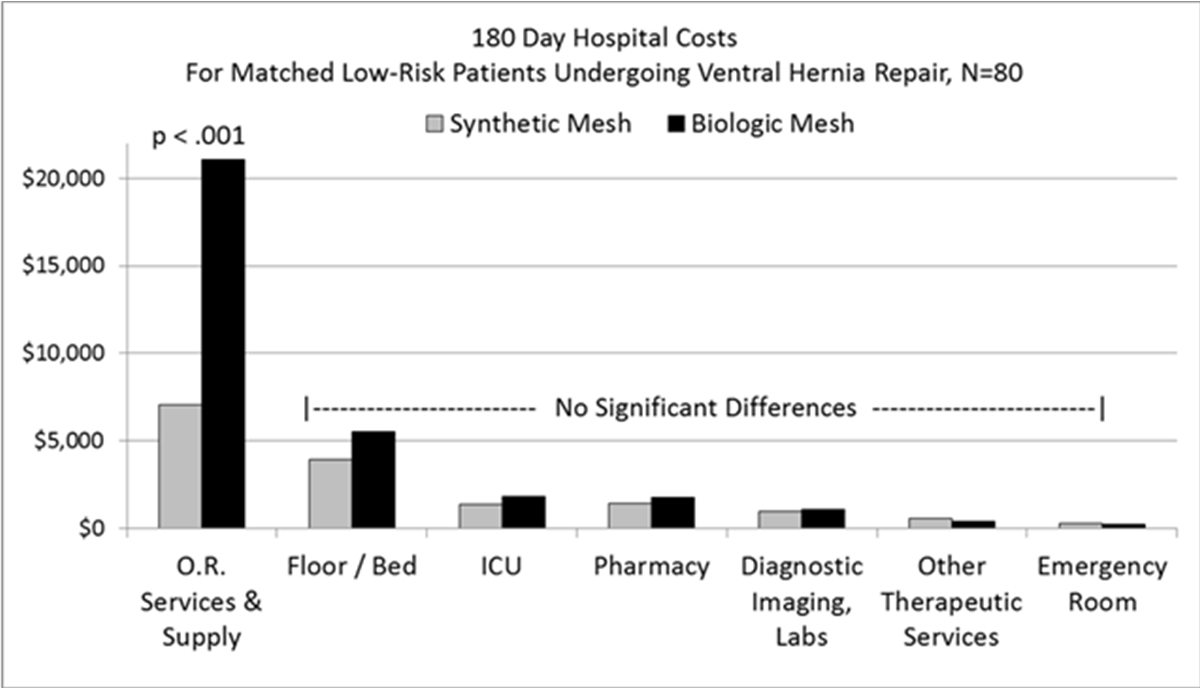C. Totten1, N. D. Ward2, D. L. Davenport1, J. Roth1 1University Of Kentucky,Department Of Surgery,Lexington, KY, USA 2University Of Kentucky,College Of Medicine,Lexington, KY, USA
Introduction: Ventral hernia repair (VHR) using biologic mesh (BioM) has higher hospital costs during operative hospitalization than synthetic mesh (SynM). One study suggests BioM follow-up costs may be less making overall costs equivalent. This study compared 90-day pre- and post-VHR hospital costs in BioM versus SynM patients matched on infection risk.
Methods: This retrospective database study matched patient perioperative risk data in our local National Surgery Quality Improvement Database with resource utilization data from our cost accounting system for 385 VHR patients. Costs and hospital encounters were analyzed for 90 days before surgery and 90 days after discharge (180 days). Clinical, financial, and infectious outcomes were compared in unmatched SynM (n=303) and BioM (n=82) groups. Propensity scores were used to match 40 SynM and BioM case pairs with similar wound class, concomitant procedures, recurrent hernia status, approach, inpatient vs. outpatient, and American Society of Anesthesiology (ASA) class. Matched group outcomes were compared.
Results: BioM patients in the unmatched group were older, had higher ASA and wound class, more frequent concomitant procedures, and open inpatient procedures performed on recurrent hernias. Wound occurrences were more frequent in unmatched BioM patients (19.5% vs. 5.3%) as were 180-day costs ($28,800 vs $14,000). Matching was successful for mostly clean wound class patients (34/40 in the BioM group; 35/40 SynM) and a few with concomitant procedures (2/40 in the BioM; 3/40 SynM). In these low risk patients, wound occurrences were similar (BioM, 15%; SynM, 10%) as were readmissions (BioM 33%; SynM 23%), but 180-day costs remained higher ($31,844 vs. $15,527). There were no differences in 180-day diagnostics, emergency room, ICU, floor, pharmacy or therapeutic costs (Figure). 180-day O.R. services and supply costs were higher in the BioM group ($21,106 vs. $7,067).
Conclusion: BioM is utilized more in higher risk hernia repairs involving higher wound class and ASA scores, concomitant procedures, and recurrent hernias. Clinical outcomes following low risk VHR are similar with both SynM and BioM, however SynM is more cost effective including 90 days pre- and post-operation hospital costs.

